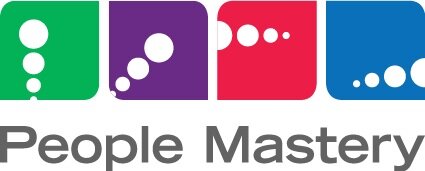How to nail positive feedback (part 1 of the trilogy)
With end-of-financial-year already here, you might be gearing up for whatever version of ‘performance reviews’ your organisation subscribes to. Perhaps this is something your organisation excels at, and your people are engaged and motivated to perform at their best as a result.
Or maybe, like far too many others, you are dreading the thought of rolling out what feels like a box-ticking exercise, and ardently wish there was ‘a better way’ that actually made a positive impact.
Well, there IS a better way to engage your people and motivate them to perform at their best, and you can start using it right now whether or not your organisation is on board.
How to engage and motivate your people to perform at their best
It’s called ‘developing your people’, and it doesn’t happen once or twice a year - it’s an ongoing cycle of conversations, goal-setting, coaching and feedback that I believe is the most important and impactful thing you can do as a people leader.
I often hear people say, ‘If I develop my people they may leave.’ Newsflash! I can absolutely guarantee you one thing: if you don’t develop your people, they definitely will leave.
So, where to start?
One thing you can do immediately - today - is to start giving your people regular, timely, effective feedback that helps them to learn and develop.
This may be something you are doing well already, and if so, great! It may also be something you find daunting and try to avoid - and if that’s you and you recognise this in yourself, also great! Hats off to you for being able to recognise your own opportunities for growth and development.
Either way, to ensure you are really hitting the mark with your feedback, there is a simple structure you can use to construct effective feedback that really lands. You could even say that your feedback will be five-star feedback, as we’re going to use the acronym STAR.
The STAR approach to giving feedback that hits the mark
There are three elements in a piece of STAR feedback:
ST Situation or Task The context in which the action or behaviour took place.
A Action The action/behaviour of your team member.
R Result The result this action/behaviour achieved.
There are lots of feedback models ‘out there’. One of the reasons I really like STAR is because many of you will already be familiar with the model from ‘behavioural’ interview processes you’ve participated in, which makes it even easier for you! One tool - two awesome applications.
What’s the secret to STAR’s success?
The secret sauce of the STAR approach when giving feedback is one simple thing: it ensures your feedback is specific.
And why does that make all the difference?
Well, compare these two versions of what is intended to be the same positive feedback:
‘Hey Erin, well done on your calls today. Keep up the good work!’
‘Hey Erin, I was listening to one of your calls today, when you were dealing with that angry customer (ST). I was so impressed by the way you took the time to listen to them and ask questions to really understand their issue even though they were irate (A). Your calm approach and willingness to listen resulted in them calming down, and then you smoothly resolved their issue for them on the spot (R). Well done.’
Which one feels more genuine, and will make your team member feel ‘seen’ and appreciated? Which one clearly expresses what you’d like them to do more of so that they can continue to be successful in future? Which one is ultimately more motivating?
Both have equally good intentions, but specific recognition is much more powerful. It demonstrates to your team members that you are paying attention to what they are doing, you appreciate their good work and you care enough to take the time to give them feedback.
When people regularly hear ‘great job!’ it soon becomes meaningless. It also completely misses the opportunity to reinforce the specific positive behaviours you noticed and support their continuing success.
Here are some more examples of positive STAR feedback:
For a construction team member:
‘Rohit, thanks for sorting out the supply issue yesterday (ST). When we discovered that we didn’t have enough scaffolding to finish the job I appreciated that you took the time to calculate exactly what we needed to finish and then contact the supplier to quickly get additional scaffolding delivered to the site (A). That saved us having to return to that worksite again tomorrow when we have a very tight schedule (R).’
For a cafe team member:
‘Alex, remember that tricky customer yesterday who kept changing his mind with his order (ST)? I appreciated how you stayed calm even though you had to change the order three times, and that you took the time to explain the dishes to him so that he knew exactly what he was ordering (A). He had a great experience and ended up writing us an awesome review on Instagram (R).’
For a finance team member:
‘Wow! That auditor really kept us on our toes, didn’t they, Poorwa?! Congratulations on all the work you did to prepare for the audit (ST); the way you presented the information and had everything available at your fingertips for the auditor really made things run smoothly (A). The auditor was impressed with your professionalism and we’ve passed the audit with flying colours (R). I’m really grateful for your assistance.’
And now, your challenge: find an opportunity today - right now if you can - to give some STAR feedback to a team member. And as a general rule of thumb: when you see something, say something! When you make a regular practice of giving genuine, specific positive feedback you will SEE the change in your team members and everyone will reap the benefits.
Anna x
P.S. You might be wondering, ‘What if I have to give some tricky feedback to a team member who is not performing so well?’ I’m so glad you asked! It’s all here in Part 2 of this series on nailing your feedback.


